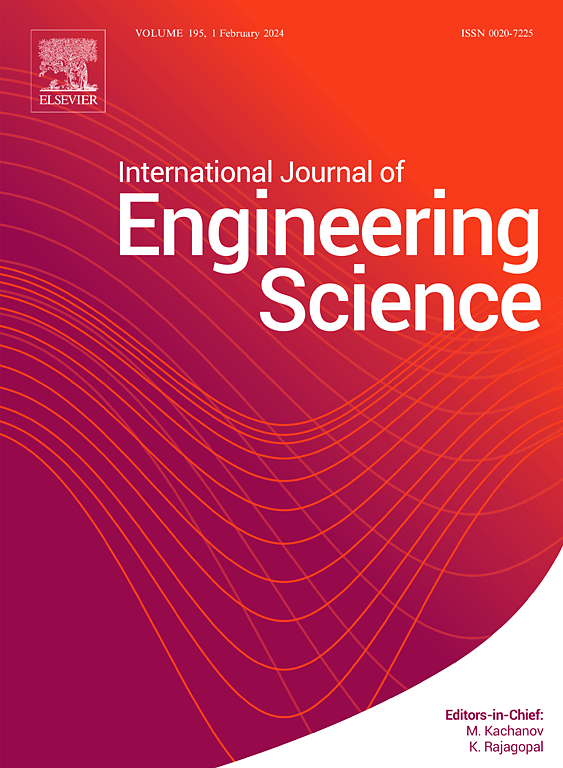单向多组分材料纵向弹性模量的极化估计
IF 5.7
1区 工程技术
Q1 ENGINEERING, MULTIDISCIPLINARY
International Journal of Engineering Science
Pub Date : 2025-05-13
DOI:10.1016/j.ijengsci.2025.104279
引用次数: 0
摘要
我们考虑由n个横向各向同性分量组成的弹性单向复合材料,这些分量在横向平面上都是统计各向同性的。基于最小能量或互补能量原理,构建极化(扩展hashin - shtrikman型)应变和应力场,推导出n组分材料某些宏观(有效)纵向弹性模量的新的直接上或下极化估计。更精细的非平凡极化试验场可以利用复合材料横平面上的统计各向同性假设,从上面或下面给出有效模量的肯定更好的估计,而不是之前使用更简单的基本恒应变和分段恒应力试验获得的有效模量,这些试验适用于在横平面上宏观各向同性的单向复合材料(Pham, 2020)。在双组分情况下(通过涂覆圆柱组合模型获得),初级上界或下界似乎是最优的。用若干双组分和三组分的数值例子对新的和其他现有的估计和/或精确模型进行了比较。本文章由计算机程序翻译,如有差异,请以英文原文为准。
Polarization estimates for longitudinal elastic moduli of unidirectional multi-component materials
We consider the elastic unidirectional composite composed of transversely-isotropic components, all of which are distributed statistically-isotropic in the transverse plane. Based on the minimum energy or complementary energy principles, the polarization (extended Hashin–Shtrikman-type) strain and stress trial fields are constructed to derive new direct upper or lower polarization estimates for some macroscopic (effective) longitudinal elastic moduli of the -component materials. The more-refined non-trivial polarization trial fields can utilize the statistical isotropy assumption in the transverse plane of the composite to give definitely better estimates from above or below on the effective moduli than those obtained earlier using only the much simpler basic constant strain and piece-wise constant stress trial ones effective for the unidirectional composites which are macroscopically isotropic in the transverse plane (Pham, 2020). The primary upper or lower bounds appear optimal in the two-component case (attained by the coated cylinder assemblage model). The new and other available estimates, and/or exact models are compared in a number of two- and three-component illustrating numerical examples.
求助全文
通过发布文献求助,成功后即可免费获取论文全文。
去求助
来源期刊

International Journal of Engineering Science
工程技术-工程:综合
CiteScore
11.80
自引率
16.70%
发文量
86
审稿时长
45 days
期刊介绍:
The International Journal of Engineering Science is not limited to a specific aspect of science and engineering but is instead devoted to a wide range of subfields in the engineering sciences. While it encourages a broad spectrum of contribution in the engineering sciences, its core interest lies in issues concerning material modeling and response. Articles of interdisciplinary nature are particularly welcome.
The primary goal of the new editors is to maintain high quality of publications. There will be a commitment to expediting the time taken for the publication of the papers. The articles that are sent for reviews will have names of the authors deleted with a view towards enhancing the objectivity and fairness of the review process.
Articles that are devoted to the purely mathematical aspects without a discussion of the physical implications of the results or the consideration of specific examples are discouraged. Articles concerning material science should not be limited merely to a description and recording of observations but should contain theoretical or quantitative discussion of the results.
 求助内容:
求助内容: 应助结果提醒方式:
应助结果提醒方式:


